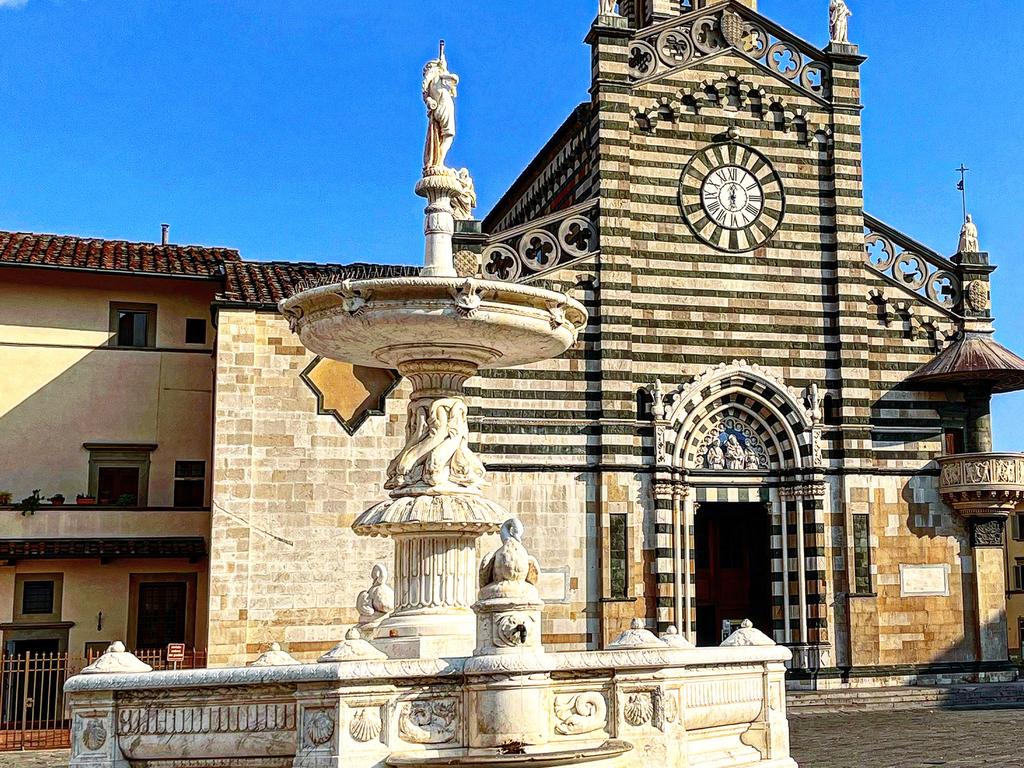The Italian lake that’s better than Como
Locals dub it Cinderella because it is superior to its rivals and often overlooked by tourists.

There are certain Italian indulgences that are too wonderful to resist. Queuing for that speedily prepared morning cappuccino in a crowded cafe is one; pretending to enjoy those strange jam-filled croissants the Italians so adore is another.
Then there’s aperitivo hour and lively evening passeggiatas, or as I am currently doing on Lake Orta, sipping a chilled prosecco and not caring that it’s only 11am.

If you could see the view from this al fresco bar in Piazza Motta, you’d understand my need to indulge. Behind me is a dazzling row of jewel-box balconied houses painted in every ice-cream hue.
Then there’s the lake itself – calm and taupe-green, with the little island of San Giulio slap in the middle.
Warm spring sunshine is drenching the bell tower and convent there, pulling into focus the neat boathouses of its lakeside mansions.
Suddenly, a funeral cortege progresses across Piazza Motta. This is some celebration.
There’s no black-garb dreariness; instead, it’s a pure Fellini moment, with a jolly brass band pumping out dance music, followed by men in casual clothes, babies in pushchairs and pretty girls in party frocks.
The hearse stops at the foot of the church steps and the crowd applauds, their claps echoing around the flagstone-covered square.

Lake Orta is only an hour’s drive from Milan and 40-odd minutes from Maggiore’s southwestern shores but shares none of the bustle of its more famous sister lakes.
Italians called it La Cenerentola (Cinderella), because they’ve long considered Orta to be far superior to those blowsier siblings. Certainly it lacks the tourist footfall received by Garda and Maggiore, and the moneyed atmosphere of Lake Como (thanks, Mr Clooney), especially if you visit in spring or autumn.
And Orta San Giulio, the lake’s main hub, is easily the Piedmont region’s prettiest lakeside town. Stay for a long weekend and, given its manageable size, you’ll soon feel part of the local scene.
At one end of Piazza Motta stands the 16th-century town hall built on elegant columns. To the right, steep cobblestoned steps lead to the peach-toned Chiesa dell’Assunta.
Off the piazza is a skein of alleyways that hug the lake, giving occasional glimpses of its exquisite island.
It’s easy to catch a ferry there from the piazza; go in the evening when the light is magical, the lamps emitting a soft glow and the swifts adding musical accompaniment to chiming bells and the suck and splash of lapping water.

Follow the meditative “Way of Silence” path that encircles the island. You’ll pass fantasy palazzi and secret gardens before finally fetching up at the Romanesque basilica, dedicated to the missionary St Julius.
He apparently rid the island of snakes and dragons, testament to which is the riot of writhing monsters covering its 12th-century black marble pulpit.
Walking is a pleasure on Orta. If you’ve got the puff, you can hike or run up to the UNESCO World Heritage-listed Sacro Monte behind the main town for spectacular lake and mountain views, pausing for breath to admire the small chapels that hallmark this route.

Or do as I do, and enjoy a waterfront stroll around the promontory towards Bagnera. It takes about 45 minutes and reveals lovely reed beds and bobbing ducks, old men fishing and couples picnicking, the lake a constant glass-plate backdrop to the idyll.
Luxury hotels are thin on the ground at Lake Orta but one gem stands out for opulent good looks. Villa Crespi, a Moorish villa set above the lake, has 14 gorgeously over-the-top suites decked out in richly toned velvets and silks. Its Michelin-starred restaurant, headed by chef Antonino Cannavacciuolo, is a serious indulgence; one not to be missed.




To join the conversation, please log in. Don't have an account? Register
Join the conversation, you are commenting as Logout